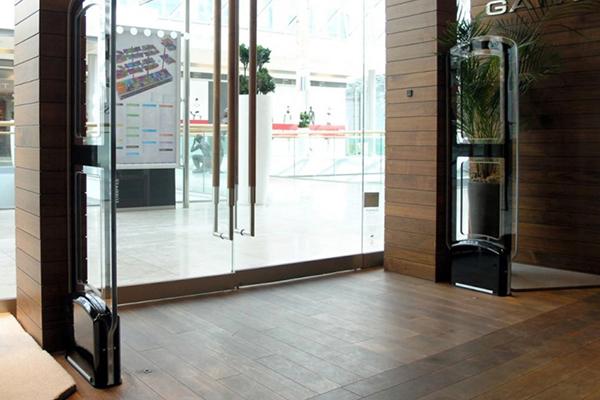How to Begin with your EAS Implementation

How do we get started?" is the final question for any retailer considering implementing an EAS solution to their shoplifting problem. Discover the 5 simple steps
A pilot is recommended by Checkpoint. Testing the solution in a small number of stores with a small number of carefully chosen products can provide the retailer with useful insights into the potential impact and ROI of the solution when fully implemented.
While not a full rollout, a pilot can appear to be a significant undertaking for a retailer unfamiliar with the intricacies of EAS deployment. As a result, Checkpoint has five simple steps that can assist:
1. Choose the appropriate stores for testing.
When choosing which stores to test in, the obvious temptation is to choose those with high levels of shoplifting and loss. This is likely to produce the best results and provide the most compelling case for a full rollout. Checkpoint, on the other hand, recommends choosing five distinct stores to represent the entire risk profile. This provides retailers with a more complete picture of EAS's true impact.
Checkpoint has discovered another significant disadvantage of using only high-risk, high-loss stores in an EAS pilot. These stores typically have the busiest management teams, the most stressful operating environments, and the highest employee turnover. The importance of in-store management involvement cannot be overstated.
2. First, choose the best products to protect.
In contrast to store selection, retailers should select products that are currently causing the most financial pain to the business. Selection should be made to ensure the pilot's success rather than to challenge or undermine it. It is recommended to begin with simple products to the tag; more complex products can be added later after success has been demonstrated.
The availability of accurate and up-to-date data on losses for a specific product is an important consideration. If a retailer does not know how much of a particular product is lost each month, piloting it is pointless because it cannot be determined whether the solution is having a positive impact. When it comes to the pilot, simplicity is strongly advised.
3. Positive participation of in-store management.
To be successful, EAS, like many other technologies, requires human intervention and involvement. EAS system is primarily a deterrent and requires full support from in-store management. This should be considered when choosing which stores to pilot in (step 1), with a preference for stores with teams actively engaged in improving the shopping experience for their honest customers.
As part of the pilot, they will be asked to perform additional tasks, be patient with the minor but noticeable disruption caused by the installation itself, and devote time to measurement, management, and feedback throughout the process. Pilots have failed in the past because store employees were unable to provide momentum and motivation for the overall goal.
4. Timing and measurement
We recommend a timeframe of 3 to 6 months for an EAS pilot, and during this time, regular measurements of shrinkage based on actual product SKU counts vs sales will be required, most likely monthly.
It is critical that no operational or product merchandising changes are made during this time. For example, if a pilot store is remodeled during the pilot, the changes to the store layout or merchandise positioning may call the effectiveness of the EAS into question. Similarly, changes to the storage of personal information or the addition of new Loss Prevention measures beyond the EAS installation, such as the deployment of a Contract Guard, could all cast doubt on the validity of the pilot results. The store should ideally remain "as is" throughout the pilot, with the only addition being the EAS installation itself.
Following a period of measurement, some customers take advantage of the opportunity to broaden the range of products protected in the test stores in order to further assess the success of RF protection. This all adds useful data to the overall ROI but should only be attempted after good baseline data on the initial set of protected products has been collected and confirmed.
5. Feedback and Problem Solving
The store is expected to provide a wealth of feedback on the pilot process, hopefully mostly positive and supportive. However, there may be some initial negative issues with the EAS installation, which are typically associated with the introduction of new technology. The store staff may have concerns about product tagging because it is new to them and may appear labour intensive at first.
Other operational issues may need to be addressed, but sharing and addressing these challenges is critical to gaining overall support. Technically, a supplier like Checkpoint Systems can draw on thousands of store installation experiences and will be able to address any concerns if feedback is shared openly.
Why is Checkpoint used?
Checkpoint is a global leader in the development of RF and RFID-based technology systems for loss prevention and inventory management applications, including labeling and tagging solutions.
Checkpoint's world-class detection systems were designed to meet retailers' product protection, operational, and store environment requirements. In-lane, SCO, and traditional entrance/exit solutions are among the solutions we offer. We take great pride in having a comprehensive Service Team ready to assist you throughout your pilot and beyond.
Our Source Tagging team has over 25 years of experience assisting retailers, CPG companies, and packagers in the safe application of RF EAS labels both within and on the packaging. EAS labels applied upstream reduce costs while maintaining brand integrity.
If you'd like to learn more about running a pilot in your store, or for more information on the solutions and services Checkpoint offers, please contact us and a member of our team will get back to you right away.
- Industry
- Art
- Causes
- Crafts
- Dance
- Drinks
- Film
- Fitness
- Food
- الألعاب
- Gardening
- Health
- الرئيسية
- Literature
- Music
- Networking
- أخرى
- Party
- Religion
- Shopping
- Sports
- Theater
- Wellness
- News


